|
The Pinewood: a Green Anniversary
70 Birthday Candles 70
|
|
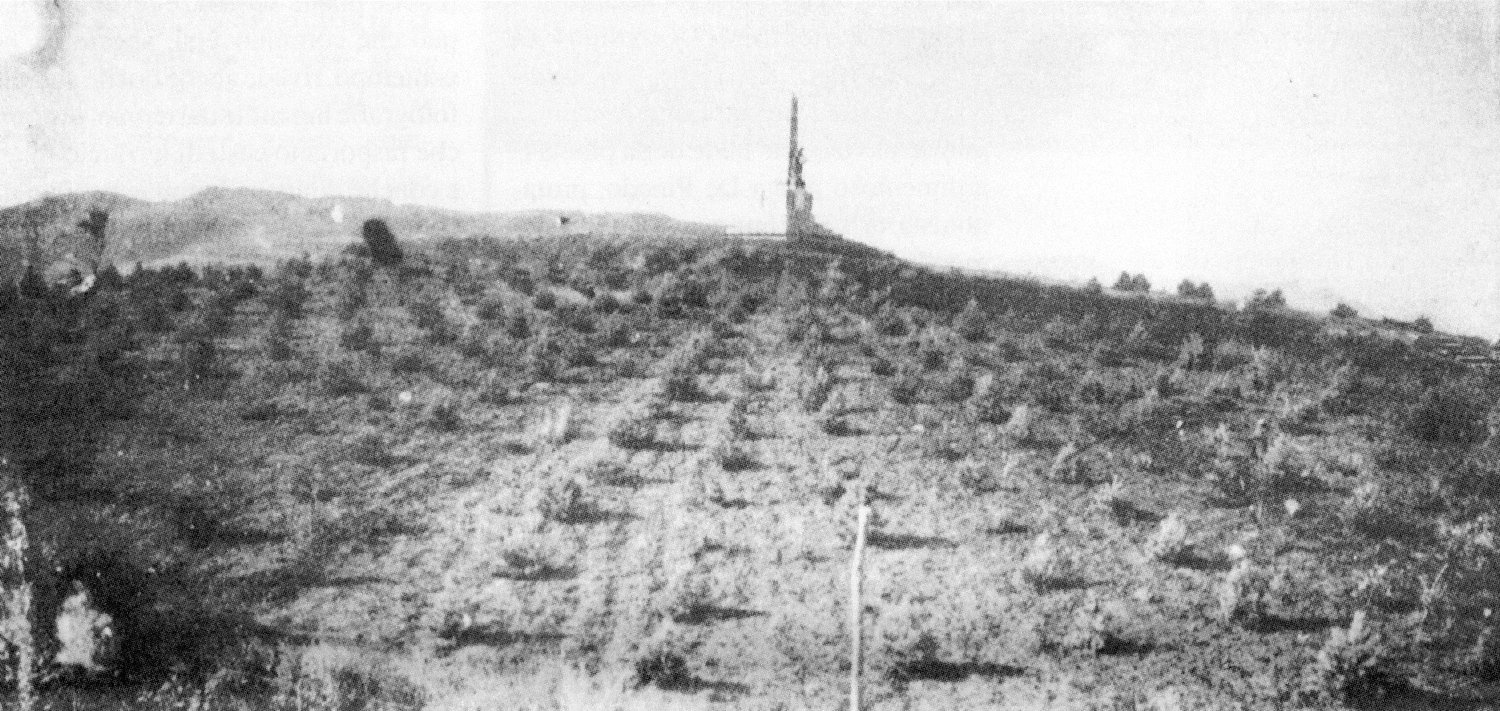 |
|
The
Pinewood:
New
Pole of Attraction
by Walter Teti |
|
The idea and project of our co-citizen Antonio Porreca, who
dedicated his energies for many years to bringing his plans to
fruition.
By Nicola Piccone
|
|
There are ever fewer
Torricellans who can still remember that funnel of earth that
arose from Corso Umberto I and ended on the bleak hill above “Le
Piane” (the plains), where now there are the Viale and the
Pinewood. In the 1920’s that hill was the only strip of land that
could have allowed housing development as a natural extension of
the future Corso, but the top part of it was where a Pine forest
was to arise, that Pineta, our Pinewood had not been foreseen; a
new pole of attraction that slowly moved the centre of gravity of
Torricella’s social life from where it had been so narrow, on the
opposite hillock of “Li Tirriete”[1] (the Terraces). A
genial idea, an expression of creativity that has nothing to do
with the “innovations of development programmes” about which the
urbanites and academics boast so much; the thinker behind it was
merely a businessman, an ironmonger, a true Torricellan, Antonio
Porreca (30/12/1880 – 29/12/1953) who apart from let’s call it
“drawing up” the plan for creating the Pinewood, dedicated much of
his energy to looking after the newly planted green shoots, until
they could grow green and strong. No-one knows where he had taken
that type of palm fir from, with its branches hanging downwards,
so rarely seen in woods or gardens. This is another
characteristic. It needs to be looked after with attention because
precisely those pine trees |
are showing signs of
aging. Now the Pineta is 70 years old and it is beginning to age;
should some plants be replaced? People talked a while ago about
techniques for “zonal replanting”, to substitute those trees no
longer green with younger ones raised elsewhere; and amongst these
there might also be some of those palm-like firs, almost unique
and characteristic of Torricella. To complete this unusual scene
there had to be a monument. The 1915-1918 War had only just ended
and there had been a large tribute of Torricellan blood. That
column, with the angel and the book of the fallen, planned in 1922
by Lucci, the artist from Pennadomo, recalls the heroism of the
citizens, which cannot be deleted from the carved stone. But for
us, apart from that, the Pinewood is quite something else. We lack
oxygen, we lack greenery, energy to chlorophyll, and we lack
natural places where we can find ourselves again; now we think
about agritourism, of starlit nights, about intimate walks
amongst the coolness of the plants. Well for us the Pinewood is
also all these things: each generation may live how it pleases,
but always with respect for the public property that is so good
for Torricella and which identifies the village itself, more than
any other assets or any illustrious personage. These may also “go
out of fashion” but the Pinewood will forever remain green.
|
|
They are not few, even if the cake for the birthday is as huge as
the queen of the village. Seated on the sweet hill, the Pinewood
of Torricella is silhouetted against the majestic horizon, draped
in the intense green that attests to the non-slumbering vitality
of nature and guards the perennial memory of so many lives lost
due to the recurrent unyielding madness of humanity. The first
pine trees of the seventy years being celebrated were planted as
long ago as 1922. The hillside which hosted them was of a
proverbial aridity. Only at the edges of one side, and with great
effort, on alternate years, did small potatoes and rare clusters
of ceci[1] grow. The entire hillside was broken up with pitchforks
blows, it was leveled as well as possible, hoed, passed over again
with the technology of the time, basically powered by “elbow
grease”. The sterile hillside, liable to earth-slips, was
fertilised by man’s love and by the miracle of seeds, to arise to
the high roleand rank of prestigious Parco della Rimembranza
(Remembrance Park). One of the first such monuments in Abruzzo,
“il monumento ai caduti della Prima Guerra Mondiale” (The Monument
to the Fallen from the First World War) had already been erected
at its summit, and the “Vittoria Alata” (Winged Victory) that
seemed to hover in the sky, deserved a worthy green garland. Happy
and |
highly meritorious for marked public spiritedness and for unusual
sensitivity towards nature was the design of he who conceived this
double concept of monument-pinewood; the inspiration possibly came
from the essential duality heart-lungs; the seat of all feelings
and that of life itself, fed by the air we breathe. Aside from all
rhetoric, those works were conceived devotedly, with the purpose
of creating beautiful things for the people, both for the dead and
for the living, and they were carried out with admirable altruism
and unforgettable dedication. Praise for all of this belongs to
our co-citizen Antonio Porreca, who dedicated years to attentive
and vigilant work to make possible the setting up and installation
of the pines, the firs and the thuja[2], which now
imposing in their majesty, are worthy of the tribute from the
generations that have grown up in their shade, delighting in their
perfumed resins, and the pure oxygen they provide. This oasis of
greenery also had an unusual baptism that came from the sky to
consecrate the happy event. Stimulated by the Association of
future Knights of Vittorio Veneto[3], and by our co-citizen, the
young aviator Luigi Mancini, the pilot (De Pinedo)* De Bernardi
arrived in a plane, landing on
(continues on page 2) |
|
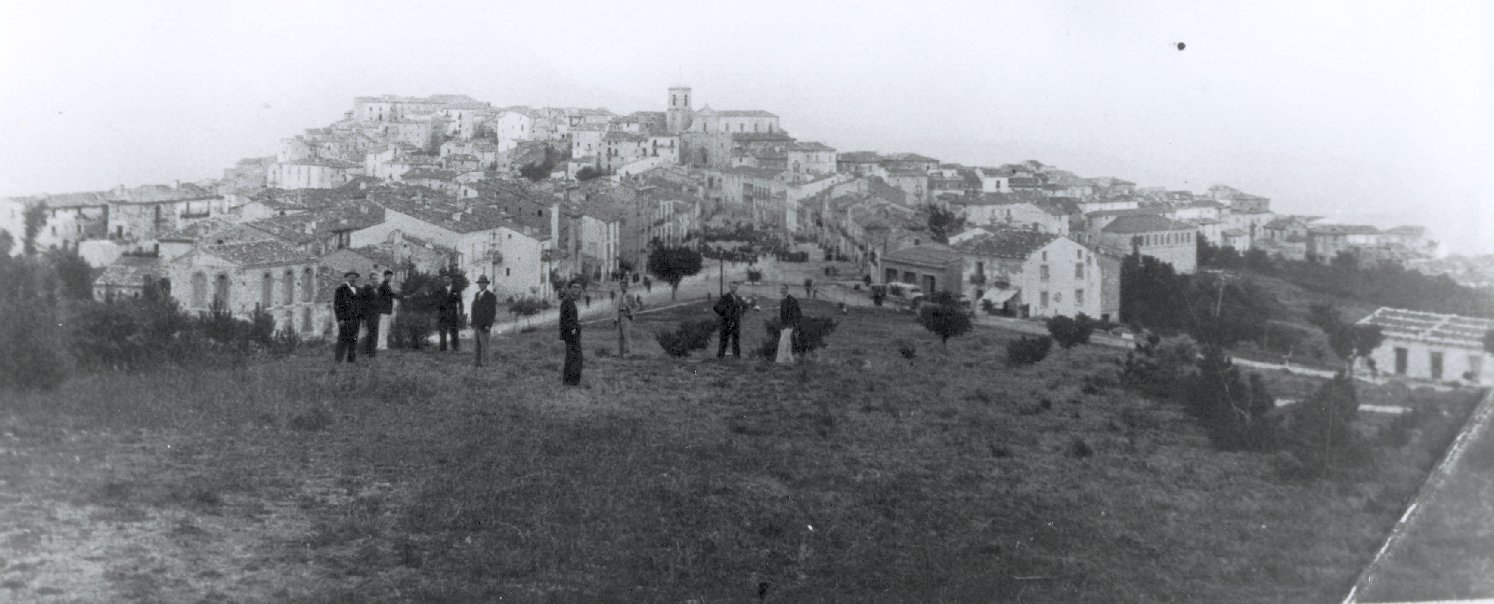 |
Top :
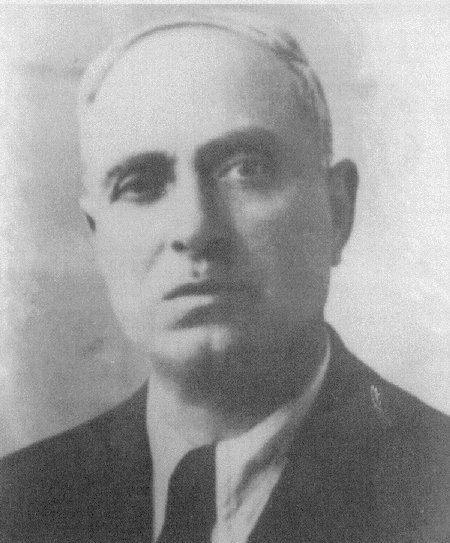 The
hill of the Pineta in the 1920’s The
hill of the Pineta in the 1920’s
To the right: the Pinewood’s
genial planner, Antonio Porreca
Below: Luigi Di Iorio,
the most strict “custodian” of the Pineta of recent times.
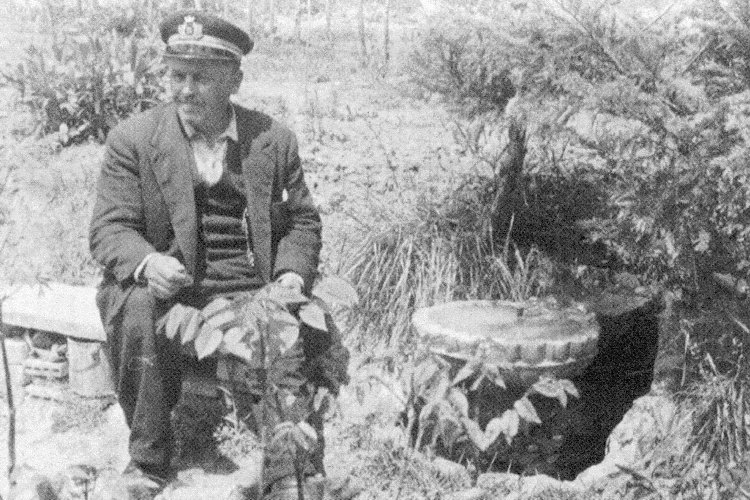
|
|
(continued from page 1)
the slopes of our Pinewood; De Bernardi was protagonist
of many daring undertakings in the skies of the world. The
intrepid pilot arrived in a biplane with wings and fuselage made
of canvas, on a rather windy day, not really suitable for
welcoming such a light plane, landing in a field still covered
with stubble, to bring his patriotic message of greetings and best
wishes to the exultant populace, who carried him in triumph.
Anyone who, after 70 years, sees those reels of cinematic film
again, which have survived the Wars and the subsequent evacuation
and dispersal of people, which have such shaky images in their few
residual sequences, cannot be other than moved; especially if at
the same time they also see those photographs, faded and yellowing
with the passage of time, of the women who are carrying baskets of
fertile loam (soil) and conche filled with water, along the slopes
of the hill to feed the young plants. The Pinewood is seventy
years old, but it doesn’t show it. It has resisted the mortar fire
of the German troops, the repeated attacks of the Pine Procession
|
Moth, the infrequent abusive attacks by irresponsible
daredevils; but there are some signs left by the weight of the
years, as happens to ladies in the third age, even if they are
undaunted and prosperous. The Pinewood needs affection and love,
just like mothers and grandmothers need these; to longer conserve
its dazzling splendour on the summit of the village that holds it.
We must blow out the seventy birthday candles to complete the rite
of its anniversary, but we must also relight the flame of the
torch of faith which gave birth to the regal guest of honour,
always keeping it with the dignity of the throne. Anyone in charge
of the task of supporting this public thing, must not forget it is
like a child, so laboriously generated and so greatly loved and
revered. Once upon a time an illustrious creature such as this was
watched over attentively and affectionately, even outside of his
hours of work, by the meritorious Civil Guard Luigi Di Iorio,
whose personal dedication to the public green, unfortunately, has
not found any converts.
|
|
Another photo of Luigi
(click here)
Translators note:
[1] Li
Tirriete – is dialect – it means the terraces or the terrace – in
Torricella it is a large balcony or terrace, with a wrought iron
railing that faces the Church of San Giacomo Apostolo towards the
Corso. In this photo it is that balcony high up, behind the little
girl.
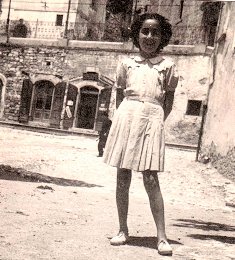 |
|
Editorial footnote:
* please note: in a subsequent edition of Amici di Torricella {No
14, December 1994, page 4} a correction to this current article
was published - as follows:-
Lucio Mancini has sent us a correction which we publish now and
beg our readers and all interested parties to forgive us for the
involuntary mistake:
“Luigi Mancini’s co-pilot, in the biplane that landed in
Torricella Peligna in 1922 for the inauguration of the Pinewood,
was not the ace Di Pinedo, but rather the ace De Bernardi – and it
was Luigi Manicini who personally flew the biplane. In the photo
one can see Luigi Mancini aboard his private plane, similar to, if
not the same one in which he landed at Torricella Peligna.”
(Lucio Mancini)
Translators notes:
[1] ceci – chick-peas
[2] Thuja – (pronounced Thuya)is an evergreen, a genus of
coniferous trees in the Cupressaceae (cypress family), native to
N. America and E. Asia, usually of pyramidal habit. They have
scalelike leaves on flattened branchlets, and most species have
strongly aromatic wood and leaves. Also called arbour vitae – the
tree of life.

[3]
Order of
the Knights of Vittorio Veneto
This
order was instituted by Law on 18th March, 1968, number 263, in
order "to express the gratitude of the Nation" to all those who,
having fought for at least six months during the first world war
or previous conflicts,
had been awarded the Cross of
Merit for War. Head of the Order, comprising a single class of
Knights is the President of the Republic; a Lieutenant General
presides over the Council, and he replies to the queries sent in
by interested parties. A Decree from the President of the
Republic, following proposal by the Minister of Defence, is
granted to the person being decorated, together with a meagre
annual cheque to provide some money to those who otherwise
do not have an income above the minimum wage.
|
| |
|